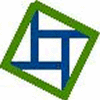Skip over navigation




Or search by topic
Number and algebra
Geometry and measure
Probability and statistics
Working mathematically
Advanced mathematics
For younger learners
Watch the Clock
Age 7 to 11
Challenge Level 





- Problem
- Getting Started
- Student Solutions
- Teachers' Resources
Watch the Clock
During the third hour after midnight the hands on a clock pointed in the same direction (so one hand was over the top of the other).
At what time, to the nearest second, did this happen?

Why do this problem?
Interpreting and visualising are both important mathematical skills. This problem requires both.
Possible approach
You may want to introduce this problem by talking about how important it is, in many aspects of mathematics, to be able to visualise. Perhaps ask the children to close their eyes and think of a clock with the hands pointing to 12 o'clock. What would it look like? Now ask them to imagine the hands going round until the clock shows, say, three o'clock. What would have changed? What would the
angle be between the hands? How do you know? Repeat with one or two more examples and then set the problem, perhaps in pairs.
You may wish to encourage them to use large pieces of paper to record their working so that this can be shared with the rest of the group at the end. Give the children a little time to 'get into' the problem and bring them back together to discuss and share any strategies they have found useful so far, before encouraging them to continue.
When appropriate, bring the children back together to share their solutions.
Key questions
Which hand moves the slower?
How far does it move in an hour?
What about the other hand?
Possible extension
Children who find a solution and can justify it could investigate how many times the two hands are exactly on top of each either during a 12-hour period, and what those times would be. Is there any pattern to the times?
Possible support
The problem as written becomes trivial if given a clock, but children who find the original inaccessible may use a clock to help them to write their own questions about where the hands are and the angles between them. You might like to offer the activity Sweeping Hands too.
You may also like
Great Squares
Investigate how this pattern of squares continues. You could measure lengths, areas and angles.
Walk and Ride
How far have these students walked by the time the teacher's car reaches them after their bus broke down?
Rope Mat
How many centimetres of rope will I need to make another mat just like the one I have here?

